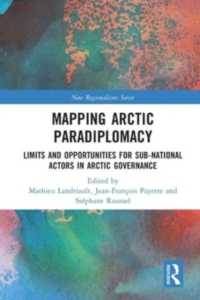- ホーム
- > 洋書
- > 英文書
- > Science / Mathematics
Full Description
Consumers' demand for reduced-fat, low-fat, and fat-free meats (red meat, poultry, and seafood) with acceptable flavor, texture, and other sensory characteristics or those similar to typical, traditional high-fat meats has im parted further urgency to rising to this challenge.








